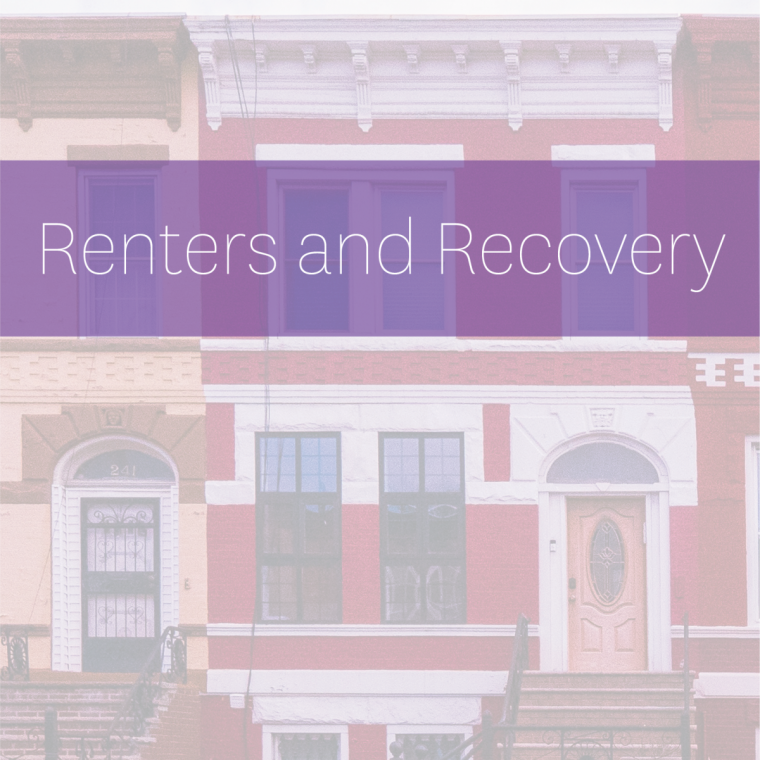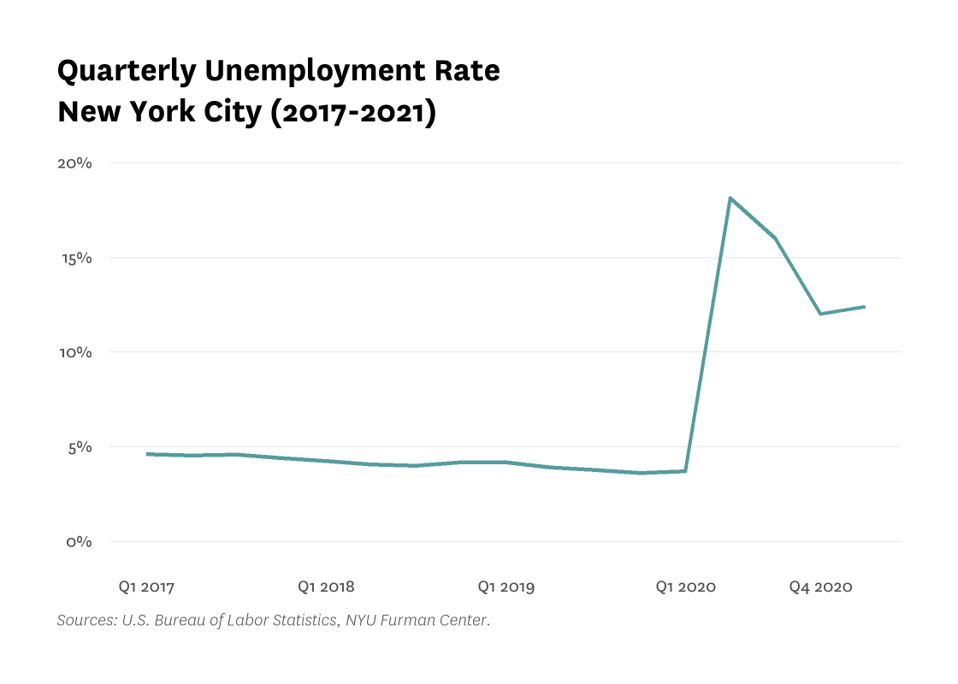
By the Numbers: Renters and Recovery

Each year, the NYU Furman Center publishes The State of New York City's Housing and Neighborhoods report, a compilation of data and analyses looking at trends in housing development, homeownership, the rental market, and dozens of other indicators illustrating how New York and its neighborhoods changed over the past year. On May 26th, we hosted a virtual event to celebrate the launch of the 20th edition of the report. By the Numbers: Focus on Renters and Recovery, focused on an original dataset showing rent payment rates in a large sample primarily consisting of units in New York City’s affordable housing portfolio. Because most of the units in the sample require means-testing, this data provides a snapshot of the economic health facing low-income renters during the COVID-19 pandemic.
To read the full report, visit furmancenter.org/stateofthecity.
Event Video
NYU Furman Center SOC 2020: Renters and Recovery from Furman Center on Vimeo.
Research Findings
After a brief welcome by NYU Furman Center Executive Director Matthew Murphy, Faculty Director Katherine O’Regan used data from the State of New York City's Housing and Neighborhoods in 2020 report to set the context for the discussion. The data highlighted the dual health and economic crises in NYC. As of May 2021, over 30,000 New York City residents had died due to the COVID-19 pandemic. Cases in the city were disproportionately located in neighborhoods where low-income residents live (see figure 1 below).

To help prevent the spread of the disease, the city’s economy was halted. A steep increase in unemployment (visible in figure 2, below) likely contributed to greater rental arrears and financial hardship for residents throughout the city.

The 2020 Focus Chapter on Renters and Recovery draws on detailed data from a sample of primarily affordable housing portfolios. The data were collected in partnership with the New York State Association for Affordable Housing (NYSAFAH) and provided a sample of 13,163 units in NYC, primarily located in the south Bronx and north Brooklyn. Analyzing these numbers highlighted a sharp increase in rental debt among a subset of tenants.
Panel Discussion
Jerusalem Demsas, Policy Reporter at Vox.com, kicked off the panel discussion to consider what the current patterns in rent and property payments may suggest about the recovery challenges that New York will face, as well as possible policy solutions.
Marisa Lago added a layer of historical context by discussing how the pandemic differs from previous crises the city has faced. Unlike during previous decades, there is a laser-focus on equity. The federal government is far more supportive, providing funding for both city and state governments. This is particularly important, as support from federal sources has an outsized impact on lower income communities. Housing has also been restored to the budget, and the city continues to work to create and maintain affordable units.
Jennifer Jones-Austin shared her own experiences working with nonprofits and households on the ground. According to Jones-Austin, the number of people who continue to experience income loss is significant, especially among people earning $75,000 or less. Even before the pandemic, many households were rent-burdened. Jones-Austin and her organization have focused on efforts to do outreach about resources for those in need, to engage with landlords to prevent evictions, and to help tenants apply for federally available rental aid before eviction proceedings begin.
Brenda Rosen discussed the pandemic’s impact on homelessness and the city’s most vulnerable residents. The number of families in shelters actually decreased during the pandemic, likely due to the eviction moratorium. Meanwhile, the number of single unhoused adults has risen, often from the result of COVID-19 related layoffs and other complications due to the pandemic.
Gary Rodney explained the concerns that landlords have as it became increasingly financially difficult to operate and maintain buildings. Partners at every level have been affected due to the pandemic. He is hopeful that federal assistance will help projects return to sustainable levels of revenue. Many lenders and financial partners increased building reserve requirements at the start of the pandemic.
After several more questions surrounding the future of housing in the city, Demsas wrapped up the discussion by asking each panelist to share what they are most optimistic about, coming out of the pandemic. From increased housing support from the federal government to more welcoming immigration laws, the panelists were able to highlight the potential for positive changes in New York City’s future.
Review all the data on the city’s current state and read our analyses via the 2020 State of New York City's Housing and Neighborhoods report.


